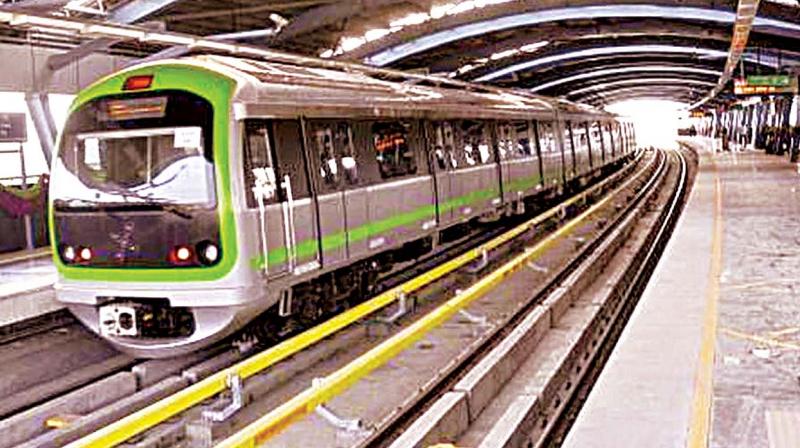Transport is about human beings, not automobiles!
From flyovers and signal-free corridors to driverless cars and cycle tracks a citizen-centric, multi-modal transport system is the way ahead.

Only recently, Prime Minister Narendra Modi advocated the use of public transport, as he launched a stretch of Delhi's Metro Magenta Line. A multi-modal transport system, he said, will ensure that the use of fuel is cut down and be useful to the environment. The answer, clearly, is not in the slew of exorbitant infrastructure projects like flyovers and elevated, signal-free corridors, as the state government so prolifically proposes.
Road networks have had the largest impact on urban design. In the 20th century, urban planners across the world moved towards a car-centric system of transportation, with the view that the future lay in people owning automobiles.
However, as more people occupy public spaces and urban settlements grow larger, it is clear that this car-centric view is simply not sustainable. The future lies in instead in multi-modal transport, where buses, trains, metro lines and other forms of transport integrate seamlessly with a motorist network, cycle paths and pedestrian friendly zones. The future, say experts, lies in driverless vehicles, ride-sharing and more expansive public transport networks, as well as a greater reliance on human-powered transportation
In the year gone by we saw multi- modal transport being slowly integrated into Bengaluru's public transport system with the growing connectivity between the BMTC buses and Metro Rail. The government has already invested a good amount in the Metro, but it needs to pay attention to the BMTC and Suburban Rail.
The BMTC, KSRTC, BMRCL, BBMP, BDA , South Western Railway and the traffic police must co-ordinate effectively and efficiently to integrate all modes of transport and give the people access to a multi-modal public transport system in the city. The expensive TenderSure roads have helped in improving footpaths, but they need to be improved on priority around Metro stations as people are looking forward to good pedestrian access to them. They need safe and easy access to Phase-1 Metro stations, and better planned Phase 2 Metro stations.
The BMRCL needs to increase the frequency of its trains and make them six coaches long within the next six months. Better funding and strengthening of the BMTC bus fleet, which is the backbone of the city’s urban transport, is also important. While the railways need to set up a special purpose vehicle (SPV) for effective rollout of the suburban rail, creation of taxi bays and bus bays on trunk roads similar to Mumbai, will also help streamline traffic.
Funding and building of foot- over- bridges or subways will help achieve closer integration between the Metro Rail and the BMTC, railways and the national highways. These are the requirements to make a difference to the city's public transport system in 2018. In addition, the much delayed paid parking should be introduced on city roads early in the new year.
Other long pending projects like the Hennur flyover, Okalipuram flyover, and the incomplete railway crossings at Bayyappanhalli, Kodigehalli, Jakkur need the attention of Chief Minister Siddaramaiah and MPs. The railway minister, for his part, must give top priority to elimination of all level crossings across Bengaluru as this has been completely neglected so far.

